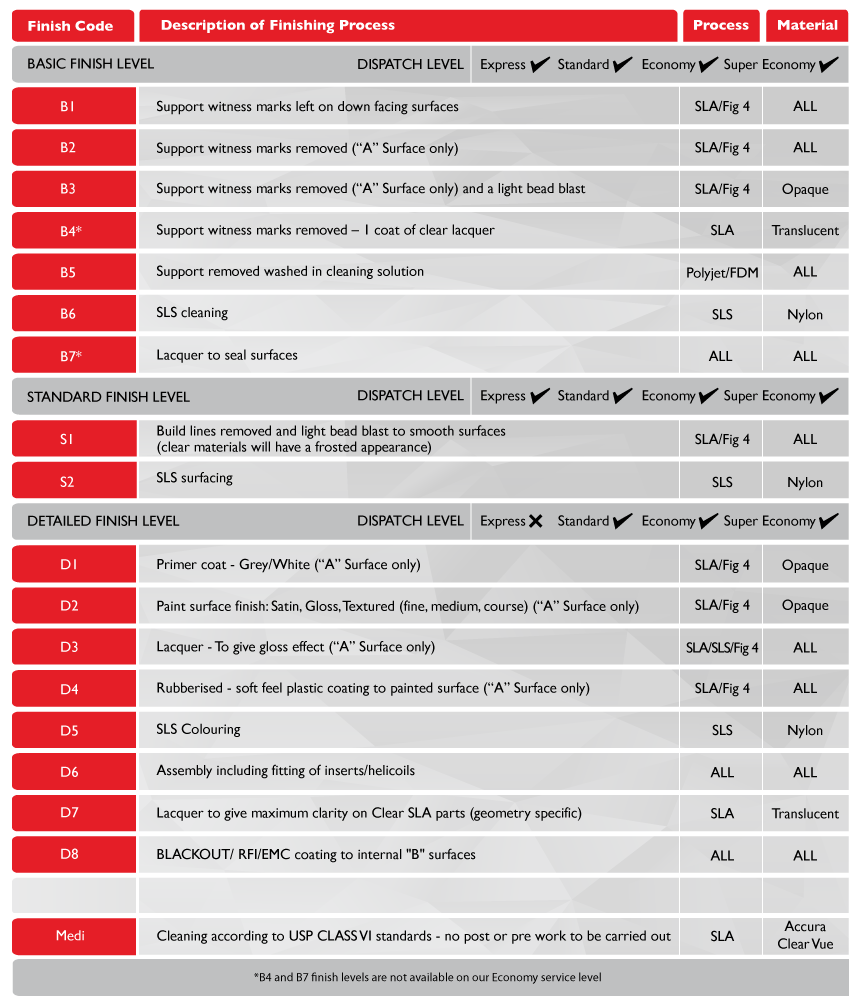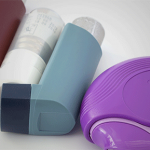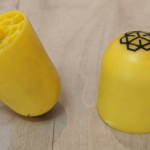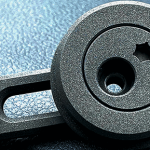- Home
- 3D Printing
- 3D Printing Finishing Options – what are they?
3D Printing Finishing Options – what are they?
What are the finishing options for 3D printed prototype parts?
3D printing is almost ubiquitous in the world of product development, playing a key role in the production of concept models, prototypes for usability trials, functional prototypes, and visual models for backers and marketing. However, the 3D printing process is only part of the story, as a part usually only achieves its full potential after the necessary finishing operations have been carried out.
Finishing options for 3D printed parts depend on many factors, including whether the finish is being applied for functional or aesthetic reasons. Here at Prototype Projects, we have five different 3D printing technologies to meet customers’ diverse requirements, and several of these technologies build parts in a choice of materials. It is therefore essential to take care when specifying finishes.
Let us take a look at the options, the factors influencing the choice, and the coding system we use as shorthand for identifying the most commonly specified finishes.

Finishes for 3D printed prototype parts
Whereas some prototyping bureaus have opted to focus on one 3D printing technology, and a few product development teams now have access to a 3D printer in-house, we believe no single 3D printing technology can do everything. This is why we use five 3D printing technologies and, if requested, we can advise customers on which would be best for a given application. Finishing options for these technologies are summarised as follows:
SLA (stereolithography) finishing options
SLA parts are washed and build supports are removed, then support witness marks can be removed, surfaces given a light bead blast (opaque parts) or a coat of clear lacquer applied (translucent parts), or build lines can be removed and the surface lightly bead blasted. If aesthetics are important, SLA parts can be sanded, primed and painted (opaque parts), lacquered (all) to give a gloss effect, or a rubberised ‘soft feel’ coating applied. In addition, internal and/or external surfaces can be sealed by lacquering, and a blackout/EMI/RFI coating applied to internal surfaces.
SLS (selective laser sintering) finishing options
SLS parts are cleaned and generally have the surfaces smoothed, after which parts can be dyed. Surfaces can be lacquered for sealing or to produce a high-gloss finish, and a blackout/EMI/RFI coating applied to internal surfaces.
FDM (fused deposition modelling) finishing options
All FDM parts have supports removed by washing in a cleaning solution. Surfaces can be sealed by lacquering, and a blackout/EMI/RFI coating applied to internal surfaces.
PolyJet finishing options
PolyJet parts have supports removed by washing in a cleaning solution. Parts built using hard materials can be sealed by lacquering and a blackout/EMI/RFI coating applied to internal surfaces. Parts 3D printed from elastomeric materials usually just have supports removed by washing.
DLP finishing options
Parts built with the DLP 3D printer are washed, then support witness marks can be removed, surfaces given a light bead blast (opaque parts) or build lines can be removed and the surface lightly bead blasted. For enhanced aesthetics, DLP parts can be sanded, primed and painted (opaque parts) or lacquered (all) to give a gloss effect, or a rubberised ‘soft feel’ coating applied. Internal and/or external surfaces can be sealed by lacquering, and a blackout/EMI/RFI coating applied to internal surfaces.
Finishing codes for 3D printed prototype parts
Many finishing options are compatible with more than one 3D printing technology and material, and we categorise the options into Basic, Standard and Detailed finishing operations. The time required varies from one process to the next, so we only offer a subset of finishes when customers opt for our Express 3D printing service (parts shipped in one working day). A wider range is available for our Standard service (shipping in three working days), while customer can choose from the full portfolio of options with our Economy service (shipping in eight working days).
A summary of which options are available with our Express, Standard and Economy services, and the options compatible with each 3D printing technology, is presented in the table below. This also shows the Finish Codes to use when ordering 3D printed parts.

Further options for finishing 3D printed prototype parts
So far we have discussed the standard options for finishing 3D printed parts but, if customers require something else, we can almost always oblige.
Vacuum casting is a very versatile process and we often use it to overmould 3D printed parts completely or partially with polyurethane resin. This can be done in a broad spectrum of colours, and in grades of polyurethane to simulate materials ranging from soft thermoplastic elastomer to hard engineering plastics. Surface finishes can be matt, satin or high gloss. Choosing the optimum technology depends largely on the material used for the 3D printed part, so contact us first to discuss your requirements.
Options for finishing 3D printed medical prototype parts
Our dedicated medical cell produces prototype parts for non-implantable medical devices and drug delivery devices for limited contact with the body. It has an SLA 3D printer permanently installed and, if required, we can temporarily move a DLP machine into the cell.
Medical parts are cleaned, following a procedure we developed in-house that incorporates the manufacturer’s cleaning guidelines. Other options normally offered on SLA and DLP parts, such as bead blasting, lacquering and painting, are not available for medical parts.
If requested, we can carry out assembly operations on medical parts in accordance with procedures agreed in advance with the customer. For example, we might install threaded inserts or create seal features by casting silicone onto 3D printed medical parts.
Dimensional inspection of 3D printed prototype parts
If you are going to gain useful information from your prototype parts it is important to know that they are true representations of your designs. All parts are visually inspected after 3D printing and finishing, and key dimensions checked. If a part has particular features that are critical to its performance, we can check these too.
If appropriate, we inspect parts using callipers, micrometers, depth gauges, bore gauges and so on. Alternative, we have a three-axis co-ordinate measuring machine in our inspection department, capable of inspecting linear dimensions, 2D profiles or 3D surfaces.
Assembly options for 3D printed prototype parts
We can install Helicoils or threaded inserts in 3D printed parts, or we can assemble them with other 3D printed parts, CNC machined prototype parts, standard off-the-shelf components or components free-issued by the customer. Another assembly option we offer is overmoulding with polyurethane resin or silicone rubber.
Talk to us
If you need 3D printed prototype parts and want to discuss your options for finishing, inspection and assembly, contact us on 01763 249760.





